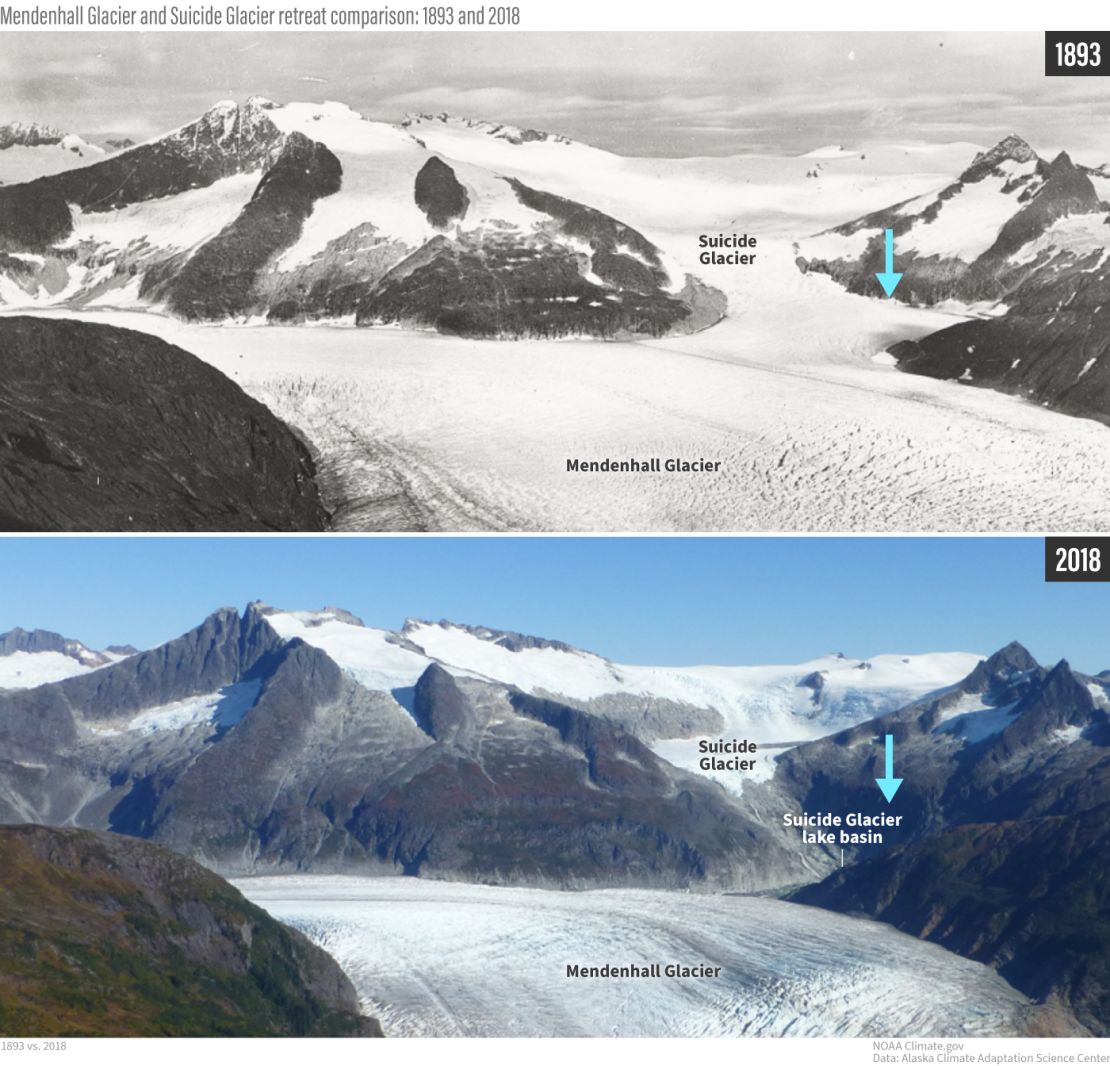A rush of water unleashed by an ailing glacier swelled an Alaska river to record levels Tuesday and caused destructive flooding in Juneau nearly a year to the date of a similar significant event.
More than 100 homes have been damaged or impacted by the so-called glacial lake outburst flooding along the Mendenhall River in the Mendenhall Valley, according to city officials, who characterized the flood severity as “unprecedented.”
Glacial lake outbursts happen when a lake of melting snow and ice and rain “drains rapidly – like pulling out the plug in a full bathtub” after pooling up so high it overtops the glacier that holds it back, the city of Juneau said in a news release.
The outbursts have become a regular occurrence since 2011 and are a consequence of climate change. The Arctic, including Alaska, is warming twice as fast as the rest of the planet as global temperatures rise because of fossil fuel pollution.
This is causing glaciers to thin or melt altogether, including the Mendenhall and Suicide glaciers where the floodwaters originated. Part of the once icy expanse of the Suicide Glacier has been replaced by an earthen divot that gets filled up like a bathtub each summer, setting the sequence in motion.
The lake at Suicide Basin filled to the brim and then overtopped the glacier on August 1, city officials reported. It came after a very wet July with about twice as much rain as is typical. By Sunday it was clear water from the lake was reaching the river and by Monday city officials warned residents they might need to evacuate.
Water levels in the Suicide Basin lake dropped more than 400 feet after this year’s outburst, including more than 350 feet in 24 hours Monday into Tuesday.
All of that water caused the Mendenhall River level to skyrocket a record-smashing 15.99 feet on Tuesday morning, more than a foot higher than the levels hit last year when homes collapsed over the side of the eroded riverbank and into the waterway.

This year’s flooding reached farther into Mendenhall Valley. There was “a lot more water in the valley, on the streets, in people’s homes,” Juneau Deputy City Manager Robert Barr told the Associated Press.
Pictures posted by Alaska’s emergency management agency on Facebook showed homes surrounded by a milky expanse of floodwater high enough to cover vehicles’ hoods.
Some streets at one point had 3 to 4 feet of water, possibly more, Barr said. No one was injured and the city opened an emergency shelter, and about 40 people were there overnight.
Alaska Gov. Mike Dunleavy issued a disaster declaration to aid the response and recovery.
“I am grateful no one has been injured or killed by this morning’s outburst flood,” Dunleavy said. “Emergency responders and managers have done an outstanding job keeping their residents safe.”

Floodwaters have since receded now that the glacial lake is no longer full and the river has dropped below flood stage, the National Weather Service in Juneau said.
CNN meteorologist Mary Gilbert and the Associated Press contributed to this report.

